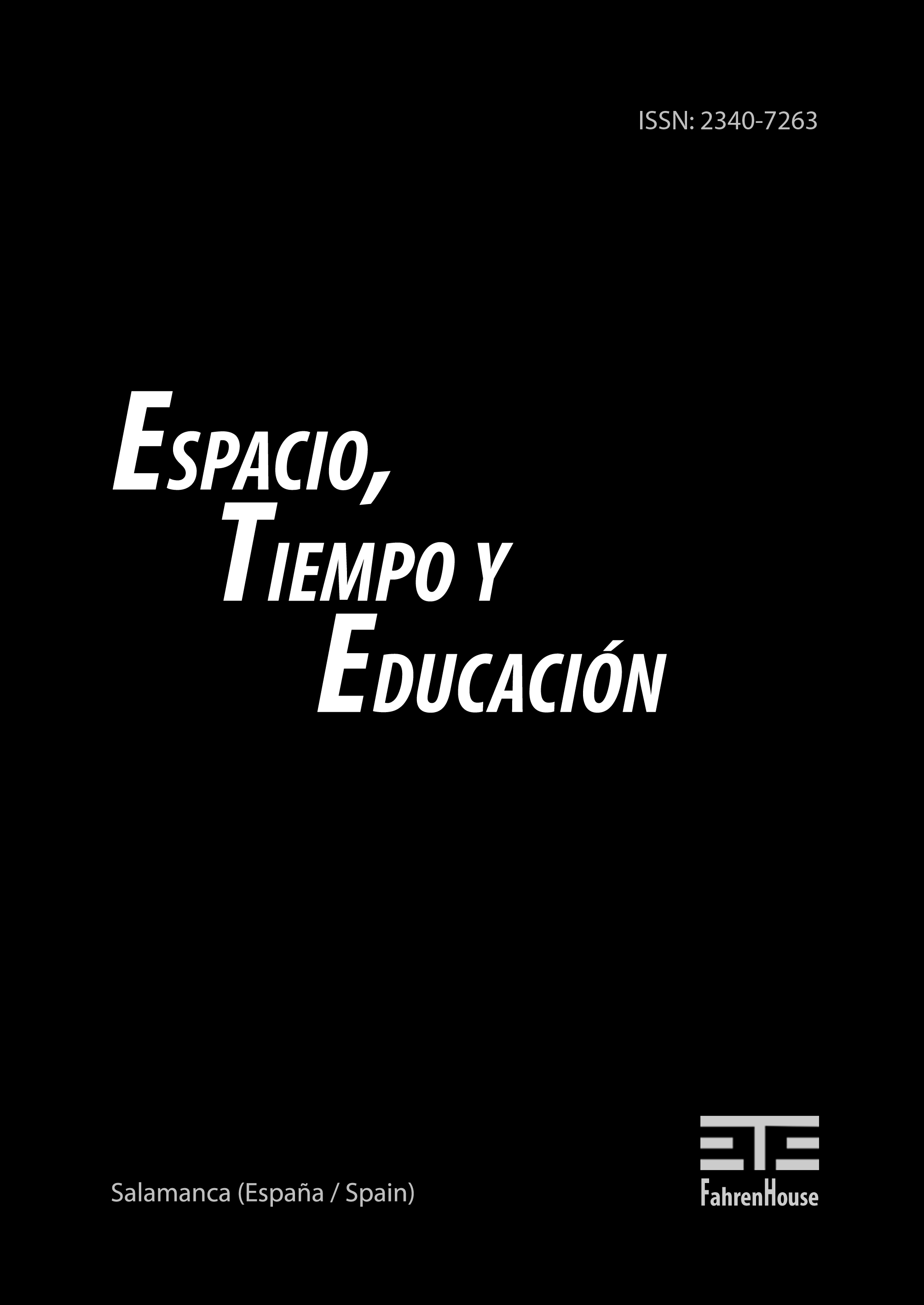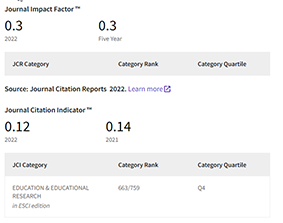Curriculum Theory and the Welfare State
DOI:
https://doi.org/10.14516/ete.183Keywords:
Curriculum, welfare state, education, criminal justice, policeAbstract
How do states make citizens? The question is as old as states themselves. Surprisingly, however, the approaches to answering it have emerged as a form of parallel play, uncoordinated (and poorly understood) across fields. This essay attempts to reconcile disparate realms of social research that address the question. The first, curriculum theory, grows out of educational research that for a century has focused almost exclusively on schools, schooling, and intentional settings for academic knowledge transmission. The second realm draws primarily on research from psychology, sociology, and political science to look empirically for effects of exposure to particular kinds of social phenomena. These include, but are not exclusive to, public institutions and policies. This essay begins by developing a mainstream conception of curriculum theory. It then compares and contrasts social science traditions that engage questions related to the state’s role in civic identity formation. Finally, it offers a case study on New York City’s controversial policing strategy known as Stop, Question, and Frisk, exploring how curriculum theory (developed in the context of mass schooling) can be a useful framework for understanding the educational features of a distinct social policy.
References
Anyon, J. (1980). SOCIAL CLASS AND THE HIDDEN CURRICULUM OF WORK. The Journal of Education, 162(1), 67-92.
Anyon, J. (1997). Ghetto schooling: a political economy of urban educational reform. New York: Teachers College Press, Teachers College, Columbia University.
Bobbitt, J. F. (1918). The curriculum. Boston, New York [etc.]: Houghton Mifflin Company.
Braman, D. (2007). Doing time on the outside: incarceration and family life in urban America (1st paperback ed). Ann Arbor: University of Michigan Press.
Bureau of Justice Statistics. (2011). Contacts between Police and the Public, 2008. Retrieved from https://www.bjs.gov/content/pub/pdf/cpp08.pdf
Bureau of Justice Statistics. (2016). Correctional Populations in the United States, 2015. Retrieved from https://www.bjs.gov/content/pub/pdf/cpus15.pdf
Bureau of Justice Statistics (BJS) - Justice Expenditure and Employment Extracts, 2012 - Preliminary. (n.d.). Retrieved February 28, 2017, from https://www.bjs.gov/index.cfm?ty=pbdetail&iid=5239
Campbell, A. L. (2003). How policies make citizens: senior political activism and the American welfare state. Princeton, N.J: Princeton University Press.
Coates, J. L., Bruce Western, Kasia Cieplak-Mayr von Baldegg, and Ta-Nehisi. (n.d.). The Racism of Mass Incarceration, Visualized: an Interview With Bruce Western - The Atlantic. Retrieved March 4, 2017, from https://www.theatlantic.com/video/index/404890/prison-inherited-trait/
Cohn, E. S., & White, S. O. (1990). Legal socialization - a study of norms and rules. Springer. Retrieved from https://search.proquest.com/docview/37356548?pq-origsite=summon&
Colb, S. F. (1996). Innocence, Privacy, and Targeting in Fourth Amendment Jurisprudence. Columbia Law Review, 96(6), 1456-1525.
Cremin, L. A. (1970). American education, the Colonial experience, 1607-1783 (1st ed.). New York: Harper & Row.
Cremin, L. A. (1988a). American education, the metropolitan experience, 1876-1980. New York: Harper & Row.
Cremin, L. A. (1988b). American education, the national experience, 1783-1876 (Harper Torchbooks ed). New York: Harper and Row.
De Landtsheer, C. ’l, Farnen, R. F., & German, D. B. (2014). E-Political Socialization, the Press and Politics. Frankfurt: Peter Lang AG.
Doris, J. M., & Cushman, F. (2010). The moral psychology handbook. Oxford: Oxford University Press.
Eisner, E. W. (1985). The Educational Imagination: On the Design and Evaluation of School Programs (2nd ed.). Macmillan.
Eisner, E. W. (2002). The educational imagination : on the design and evaluation of school programs / (3rd ed.). Upper Saddle Brook, NJ: Prentice Hall.
Fagan, J. (2010). Report of Jeffrey Fagan, PhD. United States District Court, Southern District of New York. Floyd v. City of New York. 08 Civ. 01034 (SAS).
Fagan, J., & Tyler, T. R. (2005). Legal Socialization of Children and Adolescents. Social Justice Research, 18(3), 217-241.
Flinders, D. & Thornton, S. (2017). The Curriculum Studies Reader. 5th Edition. New York: Routledge.
Ganzach, Y. (2017). Cognitive ability and party affiliation: The role of the formative years of political socialization. Intelligence, 61, 56-62.
Gardiner, S. (2014, July 30). Police Unions Denied Motion in Stop-and-Frisk Case; Five Organizations That Represent NYPD Members Wanted to be Considered Defendants. Wall Street Journal (Online); New York, N.Y., p. n/a. New York, N.Y., United States.
Guetzkow, J., & Western, B. (2007). The Political Consequences of Mass Imprisonment. In Soss, J., Hacker, J. S., & Mettler, S. (Eds.), Remaking America: Democracy and Public Policy in an Age of Inequality. New York: Russell Sage Foundation.
Ichilov, O. (Ed.). (1990). Political socialization, citizenship education, and democracy. New York: Teachers College Press.
International Centre for Prison Studies, University of Essex. website. http://www.prisonstudies.org/info/worldbrief/
Jackman, T. (2016, September 21). Trump calls for national stop-and-frisk policy for cops – does it work? Washington Post.
Jackson, P. W. (1968). Life in classrooms. New York: Holt, Rinehart and Winston.
Jacobs, L. (2007). The Implementation and Evolution of Medicare: The Distributional Effects of «Positive» Policy Feedbacks. In Soss, J., Hacker, J. S., & Mettler, S. (Eds.), Remaking America: Democracy and Public Policy in and Age of Inequality (pp. 77-98). New York: Russell Sage Foundation.
Jaeger, W. W. (1945). Paideia: the ideals of Greek culture. (G. Highet, Trans.) (2nd ed). New York: Oxford University Press.
Jones-Brown, D., Gill, J., & Trone, J. (2010). Stop, Question & Frisk Policing Practices in New York City: a Primer. Center on Race, Crime, and Justice. John Jay College of Criminal Justice.
Justice, B., & Meares, T. L. (2014). How the Criminal Justice System Educates Citizens. The Annals of the American Academy of Political and Social Science, 651(1), 159-177. https://doi.org/http://dx.doi.org/10.1177/0002716213502929
Kahne, J., & Middaugh, E. (2006). Is Patriotism Good for Democracy? A Study of High School Senior’s Patriotic Commitments. Phi Delta Kappan, 87(8), 600-607.
Immanuel Kant, Kant on Education (Ueber Paedagogik), trans. Annette Churton, introduction by C.A. Foley Rhys Davids (Boston: D.C. Heath and Co., 1900). 2/19/2017. http://oll.libertyfund.org/titles/356#Kant_0235_23
Katz, M. B. (1968). The irony of early school reform; educational innovation in mid-nineteenth century Massachusetts. Cambridge, Mass: Harvard University Press.
Killen, M., & Smetana, J. G. (Eds.). (2014). Handbook of moral development (Second edition). New York: Psychology Press.
Killen, M., & Smetana, J. G. (2015). Origins and development of morality. In Lamb, M. E. (Ed.), Handbook of child psychology and developmental science (7th ed., Vol. 3, pp. 701-749). New York: Wiley-Blackwell.
Kliebard, H. M. (2002). Changing course: American curriculum reform in the 20th century. New York: Teachers College Press.
Kohlberg, L. (1984). The psychology of moral development: the nature and validity of moral stages (1st ed). San Francisco: Harper & Row.
Lerman, A. E. & Weaver, V. (2014). Arresting citizenship: the democratic consequences of American crime control. Chicago: The University of Chicago Press.
Levine, P., & Higgens-D’Alessandro, A. (2010). Youth Civic Engagement: Normative Issues. In Sherrod, L. R., Torney-Purta, J., & Flanagan, C. A. (Eds.), Handbook of Research on Civic Engagement in Youth (pp. 115-137). Hoboken, N.J: Wiley.
MacDonald, J., Fagan, J., & Geller, A. (2016). The Effects of Local Police Surges on Crime and Arrests in New York City. PLoS One; San Francisco, 11(6).
Marsh, C. J. (2009). Key concepts for understanding curriculum (4th ed). London; New York: Routledge.
Meares, T. (2015). Broken Windows, Neighborhoods, and the Legitimacy of Law Enforcement or Why I Fell in and out of Love with Zimbardo. Journal of Research in Crime and Delinquency, 52(4), 609-625.
Meares, T. L. (2014, November 3). The Law and Social Science of Stop and Frisk. Annual Review of Law and Social Science, 10, 335-352.
Montesquieu, Charles Louis de Secondat, Baron de. The Complete Works of M. de Montesquieu (London: T. Evans, 1777), 4 vols. Vol. 1. 2/13/2017. http://oll.libertyfund.org/titles/837#Montesquieu_0171-01_112
New York City Bar Association. (2013). Report on NYPD’s Stop and Frisk Policy. Retrieved from http://www2.nycbar.org/pdf/report/uploads/20072495-StopFriskReport.pdf
New York Civil Liberties Union. (nd). Stop and Frisk Data. Retrieved from https://www.nyclu.org/en/stop-and-frisk-data
Nie, N. H., Junn, J., & Stehlik-Barry, K. (1996). Education and democratic citizenship in America. University of Chicago Press. Retrieved from http://search.proquest.com/docview/39034362?pq-origsite=summon&
Paquette, D. (2015, October 27). One in nine black children has had a parent in prison. Washington Post. Retrieved from https://www.washingtonpost.com/news/wonk/wp/2015/10/27/one-in-nine-black-children-have-had-a-parent-in-prison/
Parker, W. (2002). Teaching democracy: unity and diversity in public life. New York: Teacher’s College Press.
Parker, W. (Ed.). (2015). Social Studies Today: Research and Practice (2nd ed.). New York: Routledge.
Pettit, B., & Western, B. (2004). Mass Imprisonment and the Life Course: Race and Class Inequality in U.S. Incarceration. American Sociological Review, 69(2), 151-169.
Pinar, William. (2012) What is Curriculum Theory (2nd. ed.) New York: Routledge.
Pinar, William. (2006) Race, Religion, and a Curriculum of Reparation: Teacher Education for a Multicultural Society. New York: Palgrave MacMillan.
Plato. (1992). Republic. (C. D. C. Reeve, Ed., G. M. A. Grube, Trans.) (Rev. ed.). Indianapolis: Hackett Pub. Co.
President’s Task Force on 21st Century Policing. (2015). Final Report. Retrieved from https://cops.usdoj.gov/pdf/taskforce/taskforce_finalreport.pdf
Putnam, R. D. (2000). Bowling alone: the collapse and revival of American community. New York: Simon & Schuster.
Ra, J. O., & Bourdeaux, R. M. (1977). Intelligence, Creativity, and Political Socialization: A Theoretical Model. Youth & Society, 9(1), 3-28.
Recchiuti, J. L. (2007). Civic engagement: social science and progressive-era reform in New York City. Philadelphia, Pa: University of Pennsylvania Press.
Reese, W. J. (2005). America’s public schools: from the common school to «No Child Left Behind». Baltimore: Johns Hopkins University Press.
Reynolds, W. M., & Webber, J. A. (Eds.). (2004). Expanding curriculum theory: dis/positions and lines of flight. Mahwah, N.J.; London: L. Erlbaum Associates.
Richeson, J. A., & Nussbaum, R. J. (2004). The impact of multiculturalism versus color-blindness on racial bias. Journal of Experimental Social Psychology, 40(3), 417-423.
Rothman, D. J. (2002). The discovery of the asylum: social order and disorder in the new republic (rev. ed). New York: Aldine de Gruyter.
Sampson, R. J. (2012). Great American City: Chicago and the Enduring Neighborhood Effect (Kindle Edition). University of Chicago Press.
Sampson, R. J., & Laub, J. H. (1993). Crime in the making: pathways and turning points through life. Cambridge, Mass: Harvard University Press.
Sampson, R. J., Raudenbush, S. W., & Earls, F. (1998). Neighborhood collective efficacy--: does it help reduce violence? Washington, DC: U.S. Dept. of Justice, Office of Justice Programs, National Institute of Justice.
Sandlin, J. A., O’Malley, M. P., & Burdick, J. (2011). Mapping the Complexity of Public Pedagogy Scholarship: 1894-2010. Review of Educational Research, 81(3), 338-375.
Saunders, B. A., Kelly, E., Cohen, N. P., & Guarino, C. (2016). Right-Wing Authoritarianism and Social Dominance Orientation Indirectly Predict Support for New York City’s Stop-&-Frisk Policy Through Prejudice. Current Psychology, 35(1), 92-98.
Schubert, William Henry (Ed.). (2002). Curriculum Books: The First Hundred Years. 2nd ed. Counterpoints, v. 175. New York: P. Lang.
Sherrod, L. R., Torney-Purta, J., & Flanagan, C. A. (Eds.). (2010a). Handbook of research on civic engagement in youth. Hoboken, N.J: Wiley.
Sherrod, L. R., Torney-Purta, J., & Flanagan, C. A. (2010b). Research of the Development of Citizenship: A Field Comes of Age. In Sherrod, L. R., Torney-Purta, J., & Flanagan, C. A. (Eds.), Handbook of Research on Civic Engagement in Youth. Hoboken, N.J: Wiley.
Sigel, R. S. (Ed.). (1989). Political learning in adulthood: a sourcebook of theory and research. Chicago: University of Chicago Press.
Skiba, R. J., Mediratta, K., & Rausch, M. K. (Eds.). (2016). Inequality in School Discipline: Research and Practice to Reduce Disparities. Springer eBooks. Retrieved from http://dx.doi.org/10.1057/978-1-137-51257-4
Soss, J., & Schram, S. F. (2007). A Public Transformed? Welfare Reform as Policy Feedback. The American Political Science Review, 101(1), 111-127.
Stacey, B. (1978). Political socialization in Western society: an analysis from a life-span perspective. New York: St. Martin’s Press.
Steele, C. (2010). Whistling Vivaldi: and other clues to how stereotypes affect us (1st ed). New York: W.W. Norton & Company.
Tanner, D., & Tanner, L. N. (1990). History of the school curriculum. New York : London: Macmillan; Collier Macmillan.
Tatum, B. D. (2003). «Why are all the Black kids sitting together in the cafeteria?»: and other conversations about race. New York: Basic Books.
The NCES Fast Facts Tool provides quick answers to many education questions (National Center for Education Statistics). (n.d.). Retrieved February 28, 2017, from https://nces.ed.gov/fastfacts/display.asp?id=66
Thorson, E., McKinney, M. S., & Shah, D. V. (Eds.). (2016). Political socialization in a media-saturated world. New York, NY: Peter Lang Publishing, Inc.
Torney-Purta, J. (1990). From Attitudes and Knowledge to Schemata: Expanding the Outcomes of Political Socialization Research. In O. Ichilov (Ed.), Political Socialization, Citizenship Education, and Democracy. New York: Teachers College Press.
Tyack, D. B. (1974). The one best system: a history of American urban education. Cambridge, Mass: Harvard University Press.
Tyack, D. B., & Cuban, L. (1995). Tinkering toward utopia: a century of public school reform. Cambridge, Mass.; London: Harvard University Press.
Tyler, T., & Jackson, J. (2013). Popular Legitimacy and the Exercise of Legal Authority: Motivating Compliance, Cooperation and Engagement (SSRN Scholarly Paper No. ID 2292517). Rochester, NY: Social Science Research Network. Retrieved from http://papers.ssrn.com/abstract=2292517
Tyler, T. R. (2011). Why people cooperate: the role of social motivations. Princeton, N.J: Princeton University Press.
Tyler, T. R., Fagan, J., & Geller, A. (2014). Street Stops and Police Legitimacy: Teachable Moments in Young Urban Men’s Legal Socialization. Journal of Empirical Legal Studies, 11(4), 751-785.
Tyler, T. R., Goff, P. A., & MacCoun, R. J. (2015). The Impact of Psychological Science on Policing in the United States: Procedural Justice, Legitimacy, and Effective Law Enforcement. Psychological Science in the Public Interest, 16(3), 75-109.
Tyler, T. R. & Trinkner, R. (2017). Why Children Follow Rules: Legal Socialization and the Development of Legitimacy. Oxford, New York: Oxford University Press.
Soss, Joe & Vesla Weaver (2017) Police Are Our Government: Politics, Political Science, and the Policing of Race–Class Subjugated Communities. Annual Review of Political Science, 20, 565-591
Weisburd, D., Wooditch, A., Weisburd, S., & Yang, S.-M. (2016). Do Stop, Question, and Frisk Practices Deter Crime? Criminology & Public Policy, 15(1), 31-56.
Westheimer, J. (2006). Politics and Patriotism. Phi Delta Kappan, 87(8), 608-620.
Wiebe, R. H. (1967). The search for order, 1877-1920 (1st ed.). New York: Hill and Wang.
Wildeman, C. (2010). Paternal Incarceration and Children’s Physically Aggressive Behaviors: Evidence from the Fragile Families and Child Wellbeing Study. Social Forces, 89(1), 285-309.







